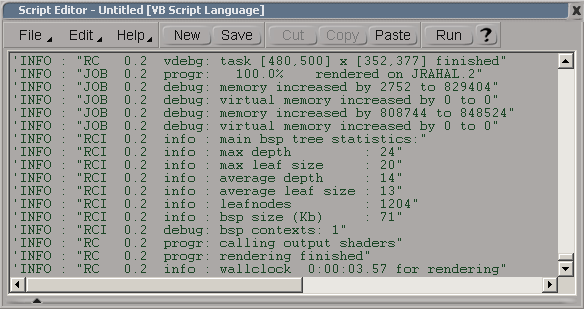The Render Manager > mental ray (Global Renderer)
The Render Manager > (expand a pass) > mental ray
Set a current pass and choose Render > Render > Renderer Options from the Render toolbar.
Options: Diagnostics
The mental ray rendering software can provide detailed messages as it reads and renders a scene. You can use these messages to help you fine–tune for quality and performance. For example, keeping track of triangle count, etc.
You can choose to output any combination of the following message types by checking the corresponding checkbox:
Errors — outputs messages about missing .dll files, missing shaders, and other errors that may cause the render to abort.
Warnings — outputs messages relating to problems that may cause the scene to render incorrectly.
Information — outputs information computed for the scene, such as BSP tree statistics, tessellated triangle counts, number of rays fired, and so on.
Progress — outputs the percentage of the scene that has been rendered, and other information about rendering progress, such as when the render begins and ends.
Basic Debug — outputs information about what information is computed and sent as each tile is rendered.
Detailed Debug — outputs detailed information about what information is computed and sent as each tile is rendered.
When rendering from the command line, use the -verbose argument.
Verbose messages are logged to the script editor, and/or the log file. To see the verbose output, simply open the script editor
by choosing View  Scripting
Scripting  Script Editor from the main menu.
Script Editor from the main menu.

The following table will help you understand logged messages:

 Except where otherwise noted, this work is licensed under a Creative Commons Attribution-NonCommercial-ShareAlike 3.0 Unported License
Except where otherwise noted, this work is licensed under a Creative Commons Attribution-NonCommercial-ShareAlike 3.0 Unported License